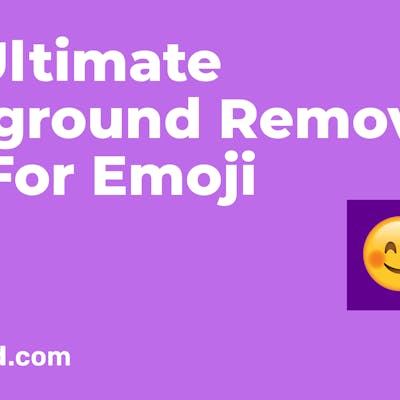|
Getting your Trinity Audio player ready...
|
Presentations have several use cases. Designing an effective presentation is a skill and a task. Since different situations call for different types of presentations, it can be confusing to choose a specific presentation style.
In this blog, we’ll explore six different types of presentations and where to use them. From informative to persuasive, motivational to instructional, we’ll cover each type in detail, providing tips and strategies to help you deliver powerful and engaging presentations that leave a lasting impact on your audience.
So, let’s dive in and discover the secrets to mastering the art of presentation!
Purpose of a Presentation
- Informing: The primary purpose of a presentation can be to provide information to the audience. This can include updates on the progress of a project, sharing research findings, or presenting data and statistics.
- Persuading: Another purpose of a presentation can be to persuade the audience to take a specific action or to change their thinking about a topic. This can include presenting a proposal, making a sales pitch, or advocating for a particular cause.
- Educating: Presentations can also be used to educate the audience on a particular topic, such as teaching a new skill, demonstrating how to use a product, or sharing insights on a subject.
- Entertaining: In some cases, the purpose of a presentation can be to entertain the audience. This can include delivering a keynote speech at a conference or event, performing a stand-up comedy routine, or using humor and storytelling to engage and captivate the audience.
Bonus: 10 Insanely Creative Presentation Ideas You Can Steal
6 Different Presentation Styles
To ensure that the presentation resonates with your audience, it’s important to first understand each type of presentation. Let’s take a closer look at different presentation styles:
1. Educational
An educational presentation aims to teach or inform the audience about a specific subject or topic. It is usually structured around a clear learning objective or outcomes and is designed to facilitate understanding, retention, and engagement with the material being presented.
You can include a range of visual aids like charts, graphs, images, or videos to illustrate and reinforce key concepts. This presentation style can include interactive elements like quizzes, activities, or group discussions to enable deeper learning.
Examples of educational presentations are lectures, workshops, training sessions, webinars, and e-learning modules.
2. Instructional
An instructional presentation is designed to provide step-by-step guidance on how to perform a particular task or activity. The goal is to help the audience understand and follow a set of instructions or procedures that will enable them to accomplish a goal or objective.
Instructional presentations typically involve clear and concise explanations of each step in the process, along with visual aids such as diagrams, illustrations, or videos to help demonstrate the steps visually. The presenter may also use props or other tools to help illustrate key concepts.
Instructional presentations include tutorials, how-to guides, product demonstrations, and training sessions for specific skills or processes.
3. Motivational
A motivational presentation inspires and energizes the audience, encouraging them to take action or adopt a particular mindset. The goal is to create excitement, enthusiasm, and empowerment in the audience, motivating them to strive for personal or professional success.
It features powerful storytelling, personal anecdotes, or quotes that convey a positive message or reinforce key themes. Visual aids such as slides, videos, or props can illustrate key points or create an emotional connection with the audience.
Examples of motivational presentations are keynote speeches, team-building events, and personal development workshops.
4. Persuasive
A persuasive presentation convinces the audience to adopt a specific viewpoint. The goal is to persuade them with a particular idea, product, or service. To create a persuasive presentation, identify and understand the needs and desires of the audience and tailor the content accordingly.
The presentation will often include a clear call to action along with statistical data, case studies, testimonials, or other forms of evidence to support the argument. Storytelling or personal anecdotes create an emotional connection with the audience and reinforce the key message.
A persuasive presentation can be for sales pitches, marketing presentations, and political speeches.
5. Problem-solving
A problem-solving presentation identifies, analyzes, and solves a specific problem. It presents a clear and logical approach to solving a problem and gaining the audience’s buy-in and support for the proposed solution.
The content involves identifying and analyzing the root causes of a problem and proposing a viable solution. The presenter can use diagrams or flowcharts to illustrate the problem and proposed solution. It can also include a plan for implementing the solution and a timeline for achieving results.
Problem-solving presentations can be related to business proposals, project plans, and research reports.
Bonus: 5 Online Presentation Tools That Will Make Your Deck Stand Out
6. Visual
A visual presentation emphasizes the use of visual aids to convey information. It uses graphics, images, videos, or other visual elements to enhance the audience’s understanding and retention of the presented material.
Visual presentations can be in different forms – slideshows, videos, infographics, or posters. These are used to communicate complex information quickly and clearly, or when you want to create a memorable and engaging experience.
The presenter may use a variety of techniques to create a visually appealing presentation, such as color schemes, typography, and layout design. It can be used for marketing campaigns, educational materials, and scientific presentations.
The AI presentation maker from Simplified offers an effortless way to design stunning presentations that will impress any audience. It offers a library of thousands of photos and videos and lets you add gifs directly to your artboard. You don’t have to spend hours generating professional and on-brand decks.
The AI presentation maker enables you to create outstanding presentations in a few steps. Start by going to the Design Dashboard and clicking “Generate with AI.” Then, choose “AI Presentation,” input your presentation topic, and click “Generate.” The AI Presentation Maker will automatically create a visually appealing and customizable presentation in seconds.
Simplified indeed simplifies making presentations and is all you need to create a powerful and engaging presentation.


![7 Best AI Image Restoration Tools to Try in 2024 [Free & Paid] 7 Best AI Image Restoration Tools to Try in 2024 [Free & Paid]](https://siteimages.simplified.com/blog/Best-Free-Paid-AI-Image-Restoration-Tools-01.png?auto=compress&fit=crop&fm=png&h=400&w=400)
![How to Use Photoshop AI Generative Fill Feature [2024] How to Use Photoshop AI Generative Fill Feature [2024]](https://siteimages.simplified.com/blog/How-to-Use-Photoshop-AI-Generative-Fill-01-1.png?auto=compress&fit=crop&fm=png&h=400&w=400)
![20 Podcast Thumbnail Ideas to Boost Your Show’s Visual Appeal + Best Practices [2024] 20 Podcast Thumbnail Ideas to Boost Your Show’s Visual Appeal + Best Practices [2024]](https://siteimages.simplified.com/blog/Podcast-Thumbnail-Ideas-to-Boost-Your-Show-02-1.png?auto=compress&fit=crop&fm=png&h=400&w=400)




